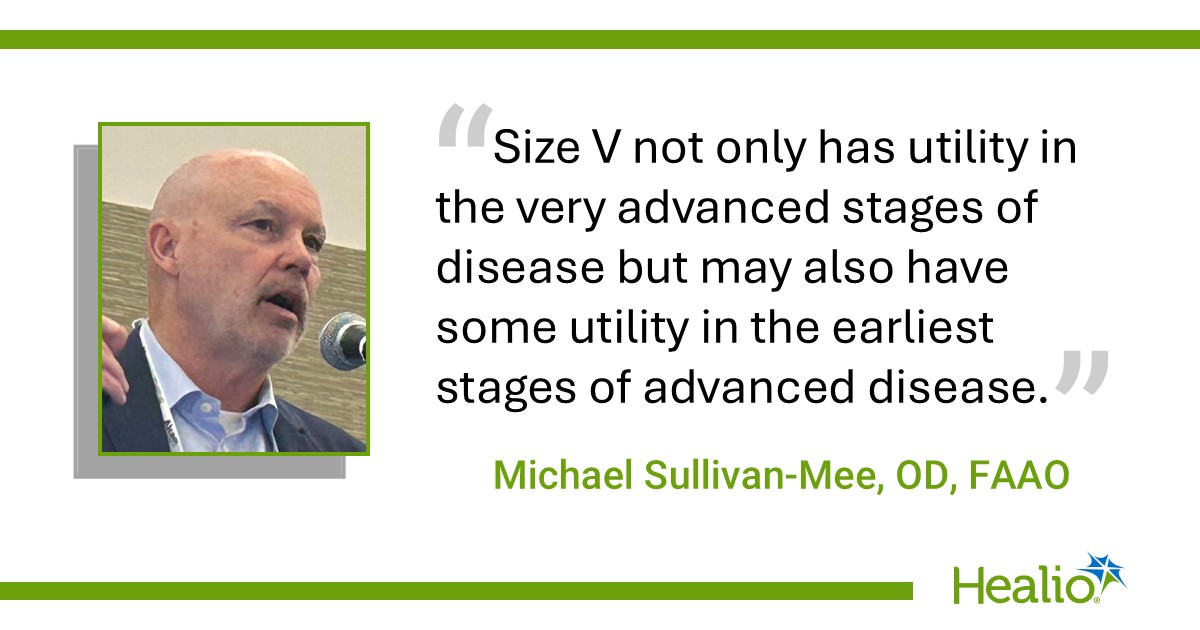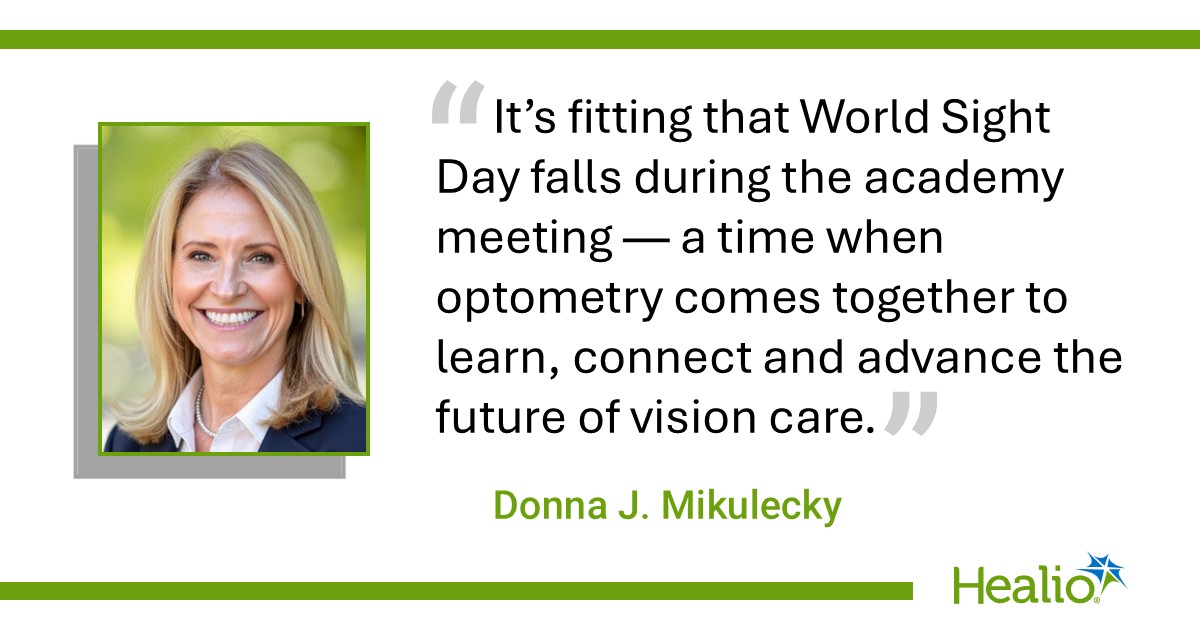October 09, 2025
2 min read
Key takeaways:
- Data supported the practice of using a size V stimulus when sensitivity is too low with size III.
- Size V had more normally sensitive points than size III in early advanced glaucoma.
BOSTON — A size V stimulus in a 10-2 visual field test in advanced glaucoma can be more useful than a size III stimulus and may have value in early stages of advanced disease, according to a speaker at Academy 2025.
The results provide evidence to support the common practice of using a size V 10-2 stimulus when sensitivity has been lost with size III.

“The next step usually at that point is you continue to use the 10-2 test, but instead of using the normal size III stimulus, which is typically used, you actually increase [it] to a size V, and that’s 16 times larger,” Michael Sullivan-Mee, OD, FAAO, chair of the department of clinical education and a clinical professor at the State University of New York (SUNY) College of Optometry, said at an academy-sponsored press conference. “But while it makes a lot of sense and it’s intuitive to use a size V when we get to very advanced stages of glaucoma, there’s really no evidence in the literature at all about exactly when to use size V.”
Sullivan-Mee and colleagues retrospectively analyzed data on patients with advanced glaucoma treated at SUNY College of Optometry University Eye Center. The study included 74 eyes of 58 individuals who had good quality visual field tests with both size V and size III stimuli.
According to pairwise comparisons, the size V tests showed more “normally sensitive” points and fewer “zero dB” points than the size III — both of which were expected results, Sullivan-Mee said. The researchers also found that as glaucoma became more severe, the size III tests began showing more zero dB points more quickly than the size V tests.
“What we see here is that as the disease gets more severe, the difference between these increases, indicating that the size V is actually more useful than the size III,” he said. “This validates our approach for the use of size V once size III becomes exhausted.”
There was an unexpected finding in the comparison of normally sensitive points between size III vs. size V, Sullivan-Mee said. The difference between the tests was largest at the lowest levels of visual field loss and decreased as visual field loss increased.
“The biggest difference we see is actually in the earlier stages of advanced glaucoma, and as it gets worse, they actually merge,” Sullivan-Mee said. “This indicates that size V not only has utility in the very advanced stages of disease but may also have some utility in the earliest stages of advanced disease.”
Sullivan-Mee cautioned about some of the drawbacks of using a size V test.
“One is that the test is longer … 8 minutes for the size III, 10 minutes on the size V,” he said, adding, “There is no statistical analysis on the size V, so as a clinician it’s hard to actually interpret these tests. It’d be very helpful if industry paid attention to this kind of data and developed size V statistical analysis.”









